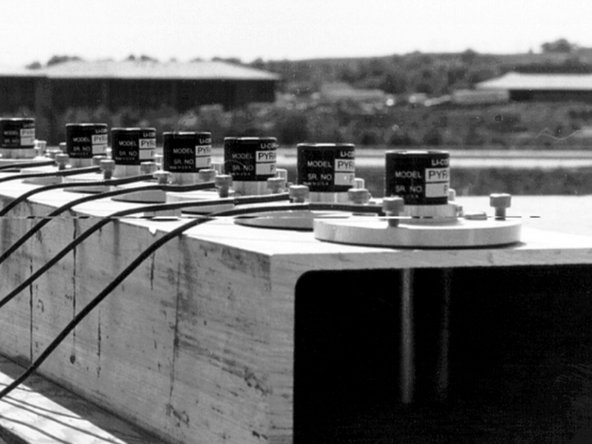Tools
No tools specified.
-
-
The Met One MSO weather sensor comes with a U-bolt mounting kit for mounting to a pole or pipe. The pole can be horizontal or vertical.
-
-
-
The Vaisala WXT 520 is a wind sensor and rain gauge. Position it on level ground with the opening or surface of the gauge open to the sky.
-
The height should be low as possible but high enough to avoid splashing from the ground. The surface should be grass or gravel, as rain may splash up from smooth surfaces like concrete and give inaccurate results.
-
The pole should be 26.7mm (1.05 inches) for a Vaisala with an adapter sleeve, or 30mm (1.18 inches) for a Vaisala without an adapter sleeve.
-
-
-
The Cirrus noise sensor comes with 2 U-bolts to secure it to an existing pole. Wall mounting brackets are also available.
-
Ensure the microphone is between 1.2 – 1.5m above the ground.
-
Install the sensor where the environmental noise is most likely to cause annoyance to neighbouring residential areas or other sites.
-
Mount it away from obstacles and building walls.
-
-
-
It's very important to correctly install anemometers to obtain accurate wind speed and direction measurements.
-
You should position the Gill Windsonic 10m above the ground to a 1.75 inch (44.45mm) pole.
-
The distance between the sensor and any obstruction should be at least 10 times greater than the height of the obstruction.
-
Take a compass to ensure the sensor is orientated in the correct direction.
-
-
-
Pyranometers (solar radiation sensors) are easier to install than anemometers because they are less affected by their surroundings.
-
Mount the Li-Cor LI-200 on a flat surface with an unrestricted view of the sky.
-
-
-
To learn more about positioning and operating your third-party sensor, download the relevant documents at the end of this guide.
-
For further support, contact Technical Support.
For further support, contact Technical Support.
Cancel: I did not complete this guide.
One other person completed this guide.








